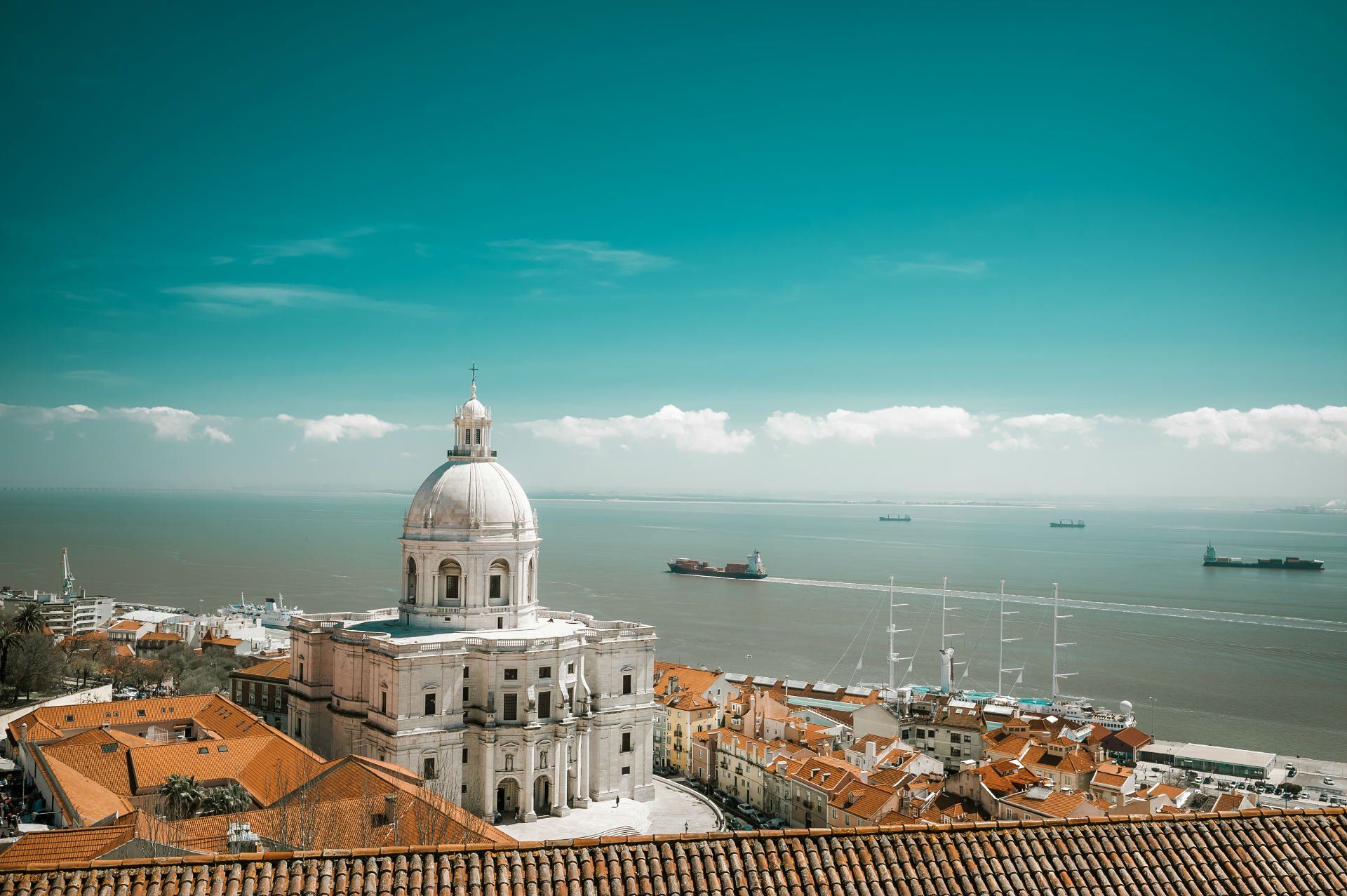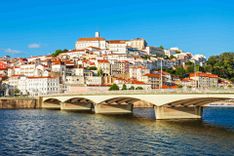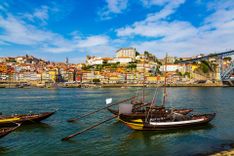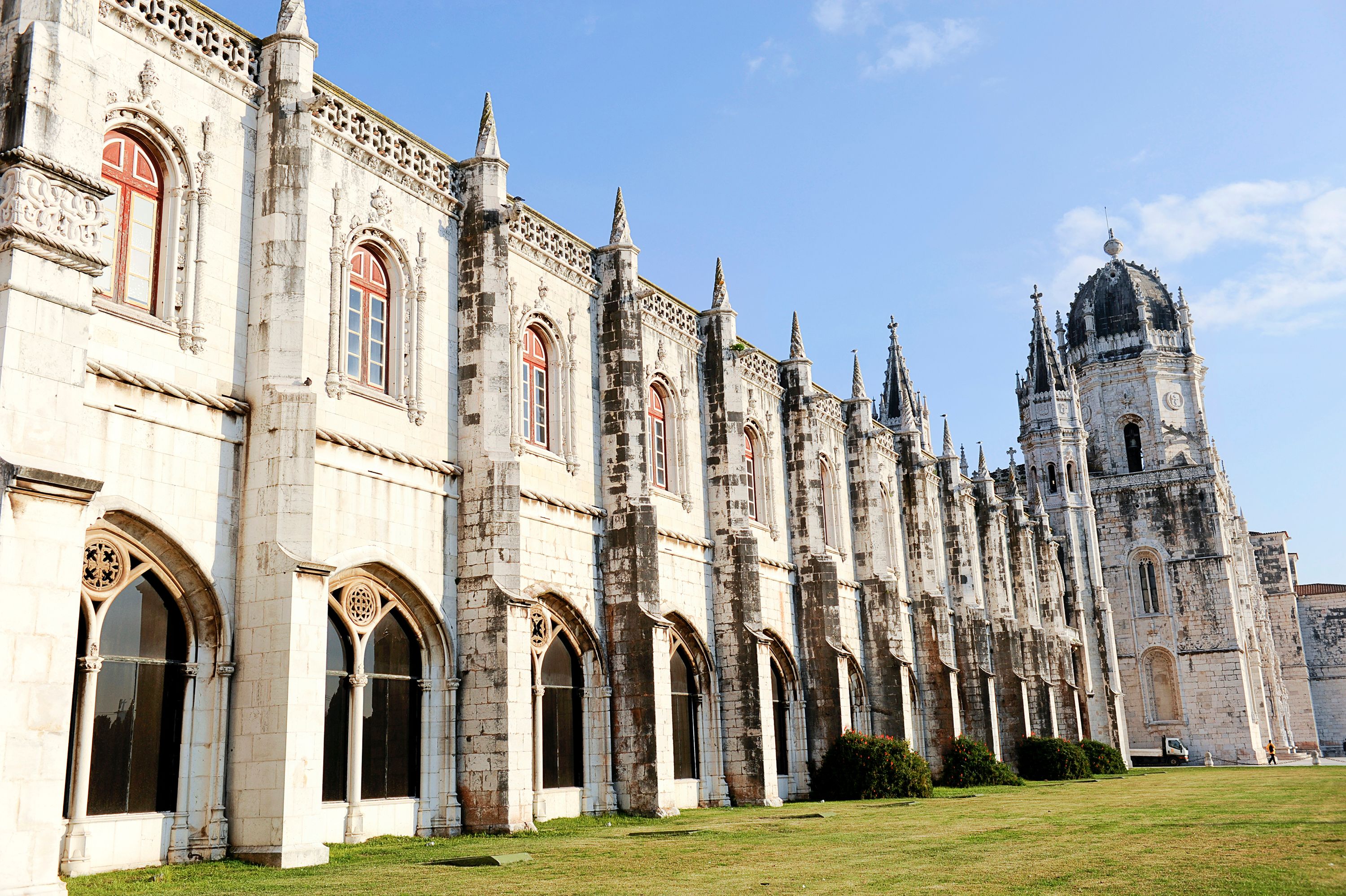Discover more places in Portugal
Planning your own trip? Prepare for your trip
Use Rough Guides' trusted partners for great rates
- Portugal
- Lisbon
Plan and book your private, tailor-made tour with vetted local experts
Lisbon may be Portugal’s biggest city, but it’s far from an overwhelming capital. Built across seven hills and spilling down to the River Tagus, it’s a city where cobbled streets lead you past tiled facades, old yellow trams rattle uphill, and the scent of grilled sardines drifts from tiny taverns. You can tick off the big sights – the ornate Jerónimos Monastery, the hilltop São Jorge Castle – but Lisbon’s real charm lies in its everyday life, with neighbors chatting from wrought-iron balconies, fado music drifting from a tucked-away bar in Alfama, and markets piled high with fresh seafood.
It’s also a city on the move, with creative hubs in former factories, stylish rooftop terraces, and some of the best nightlife in Europe. Give yourself a few days – you’ll want time to wander, linger, and climb just one more hill for another view.

Olá! I’m Joel, your local expert in Portugal. If you’re planning a trip to Portugal, Lisbon is a city you can’t skip. I’ve walked its hills more times than I can count, and I still find new corners that surprise me. This Lisbon travel guide will help you plan your visit – how to get here, what not to miss, and where to base yourself. Lisbon isn’t a place to rush.
It’s best enjoyed slowly, pausing for a bica (espresso) in a neighborhood café, riding an old tram through streets barely wide enough for it to pass, and stopping to admire a tiled wall you’ve never noticed before. You’ll still want to see the big names – Belém Tower, Jerónimos Monastery, Praça do Comércio – but the real magic is often found in between.
Joel’s tip
Take tram 28 early in the morning or late in the evening. You’ll dodge the long queues, grab a seat, and enjoy the ride through the city’s historic quarters without being squashed like a sardine.
Best time to visit
Spring (April-June) and autumn (September-October) are perfect – warm weather, fewer crowds, and fair prices. July and August bring heat and high-season prices. Winter is cooler and can be rainy, but you’ll get cheaper stays and quieter streets.
How to get to Lisbon
Lisbon Airport has direct flights from across Europe, North America, and beyond. The airport is just 7 km from the city center – a 20-minute metro or taxi ride. Trains connect Lisbon with Porto, Coimbra, and the Algarve. Long-distance buses also run to most major Portuguese cities and into Spain.
Best areas to stay in Lisbon

Santa Engracia Church, Lisbon, Portugal @ Shutterstock
Lisbon sits on Portugal’s west coast, where the River Tagus meets the Atlantic Ocean. It’s the country’s largest city and its political, cultural, and economic hub.
Often counted among the best places to visit in Portugal, Lisbon is a natural starting point for any Portugal itinerary. From here, you can take day trips to the palaces of Sintra, relax on the beaches of Cascais, or travel south to the Algarve for more sun and sea.
















Lisbon is hilly but compact, with plenty of public transport and walkable neighborhoods. The city’s network of trams, buses, and metro makes it easy to move between districts, though be prepared for some steep climbs if you’re exploring on foot.

Sao Jorge Castle, Lisbon © ESB Professional/Shutterstock
If you’re wondering how many days in Lisbon is enough, plan for at least three days to cover the highlights at a relaxed pace. This gives you time to explore Alfama, Mouraria, and Baixa, visit the Jerónimos Monastery and Belém Tower, and enjoy the views from some of the city’s best miradouros (viewpoints).
If you have more time, Lisbon makes a great base for a 5 days in Portugal itinerary. Spend three days in the city itself, then use the remaining time for day trips (make sure to check this Portugal trip). The palaces of Sintra, the beaches of Cascais, or the dramatic cliffs at Cabo da Roca are all within easy reach. A longer stay also lets you discover lesser-known spots like LX Factory or the Jardim da Estrela, perfect for slowing down and soaking up local life.

Lisbon @ Shutterstock
Lisbon has accommodation to suit every budget and style. Here’s a breakdown of the best areas to stay in Lisbon, depending on how you like to travel.

Bairro Alto, Lisbon © Magdalena Paluchowska/Shutterstock
Lisbon is a mix of old-world charm and modern creativity – tiled facades next to sleek rooftop bars, centuries-old monuments alongside buzzing food markets. Here are some of the best things to do in Lisbon to get a real feel for the city.
Belém Tower is Lisbon’s most photographed landmark, standing guard at the edge of the River Tagus since the 16th century. Built as a fortress and ceremonial gateway, it’s a striking mix of Manueline and Moorish styles. Inside, you can climb narrow stone steps to the top for river views, though space is tight and queues are common.
It’s busiest in late morning, especially with tour groups, so aim for opening time or late afternoon when the light is softer. Even if you don’t go inside, walking around the tower and along the waterfront is worth the trip. Combine it with the nearby Jerónimos Monastery and a stop for a pastel de nata from Pastéis de Belém – they’ve been making them here since 1837.
This UNESCO-listed monastery is a showcase of Portugal’s wealth during the Age of Discoveries. The ornate cloisters, carved from pale limestone, are among the most beautiful in Europe, with every arch and column covered in intricate maritime motifs.
The church is free to enter, but the cloisters require a ticket, worth every cent for the peace and detail inside. Lines can be long, so pre-book or arrive early. The scale and craftsmanship are breathtaking, but it’s also a reminder of Lisbon’s role in global trade and exploration. Best for history lovers, architecture fans, and anyone wanting a break from the city’s hills – the terrain here is mercifully flat.
Alfama is Lisbon’s oldest neighborhood – a tangle of steep lanes, hidden courtyards, and laundry fluttering overhead. It survived the 1755 earthquake, so wandering here is like stepping back centuries. You’ll hear fado music drifting from small taverns and find viewpoints that open suddenly between buildings.
The area is best explored on foot, but wear good shoes – the cobbles are uneven and the hills steep. Go early for quiet streets, or in the evening when bars and restaurants fill with music. It’s touristy in parts, but turn down the smaller alleys and you’ll stumble across family-run shops, neighbors chatting from balconies, and everyday life that hasn’t changed much in decades.

Portugal, Lisbon, Belem, Mosteiro dos Jeronimos (Hieronymites Monastery), facade
This rattling yellow tram has become a Lisbon icon, winding from Martim Moniz through Graça, Alfama, Baixa, and up to Estrela. The route covers many of the city’s highlights, but it’s also a working tram – locals use it daily.
It gets crowded fast, especially in summer. If you want a seat, board at the start of the line early in the morning. The ride is slow but scenic, passing tiled facades, hilltop viewpoints, and streets so narrow you could touch the walls. It’s not the cheapest way to get around, but it’s one of the most atmospheric.
Once an industrial complex, LX Factory is now a creative hub filled with indie shops, design studios, Lisbon street art, and some of the city’s trendiest cafés. The atmosphere is relaxed by day, livelier at night when the bars and restaurants fill up.
It’s a great place to shop for unique souvenirs, browse quirky bookstores, or have brunch away from the tourist center. On Sundays, there’s a market selling everything from handmade jewelry to vintage clothes. Not a must-see for first-timers short on time, but perfect for those wanting a different side of Lisbon.
Lisbon has plenty of viewpoints, but this one tops them all for sheer scale. From here, you can see the castle, the river, and the 25 de Abril Bridge all in one sweep. It’s less crowded than the better-known Miradouro de Santa Catarina, though it still draws a steady stream of visitors.
Come at sunset for golden light over the city’s red rooftops. There’s a small kiosk for drinks and snacks, and plenty of space to sit and linger. It’s a bit of a climb if you’re on foot, but that’s part of why the crowds are smaller.

Lisbon yellow tram, Portugal @ Shutterstock
Time Out Market is Lisbon’s gourmet food hall, home to a mix of top chefs, local favorites, and international eats – all under one roof. You can sample dishes from some of the city’s best-known restaurants without booking a table months in advance.
It’s busy at lunch and dinner, so grab a table early or visit mid-afternoon. Prices are higher than a neighborhood tasca, but the variety and quality make it worth it. A good choice for groups, picky eaters, or anyone short on time who wants to taste a lot in one go.
Perched on a hilltop above Alfama, São Jorge Castle offers sweeping views over Lisbon and the Tagus River. The current structure dates mainly from the 11th century, though the site’s history goes back much further. Inside, you can walk along the battlements, explore the courtyards, and visit a small museum.
It’s popular with tour groups, so mornings are quieter. The climb up from Baixa is steep – take a tram or tuk-tuk if you want to save your legs. The views alone are worth the ticket price, but the castle also gives you a sense of Lisbon’s strategic past.
This grand riverside square is framed by yellow arcaded buildings and opens directly onto the Tagus. Once the site of the royal palace, it’s now a place to stroll, people-watch, and soak up the sense of space rare in Lisbon’s tight streets.
From here, you can walk along the riverfront, explore Baixa, or visit the Lisboa Story Centre for an interactive look at the city’s history. It’s especially atmospheric in the late afternoon, when the arcades glow in the setting sun.
Just 40 minutes from Lisbon by train, Sintra is a fairytale town of palaces, gardens, and misty hilltops. The colorful Pena Palace is the star attraction, but there’s also the Gothic-inspired Quinta da Regaleira and the dramatic Moorish Castle.
Sintra gets packed, especially in summer, so start early and focus on two or three sites rather than trying to see everything. Bring layers – the weather here is cooler and less predictable than Lisbon. It’s one of the easiest and most rewarding escapes from the city.

Colourful Sintra, Portugal palace Palácio da Pena © Shutterstock
Lisbon has a Mediterranean climate, with mild, wet winters and hot, dry summers. The best time to visit Portugal depends on the kind of trip you’re after, and Lisbon offers something in every season. The city gets more sunshine than most European capitals, but you’ll still want to pack layers – mornings and evenings can be cool, even in spring.
Average temperatures range from about 52°F (11°C) in January to 82°F (28°C) in August, though summer heatwaves can push highs above 95°F (35°C). For current conditions, check IPMA (Portuguese Institute for Sea and Atmosphere).

Portugal, Lisbon, A photograph overlooking Lisbon at night with a castle in the top left hand corner.
Lisbon is a paradise for food lovers – a blend of traditional tascas, fresh Atlantic seafood, and innovative chefs reinventing Portuguese flavors. Here’s what to eat and where to eat in Lisbon to make the most of the city’s dining scene.

Pastel de Nata in the Pasteis de Belem cafe in Lisbon in Portugal © altan can/Shutterstock
Here are some unique experiences we can arrange for your tailor-made Lisbon trip – all private, flexible, and designed by our local travel experts.
Discover Portugal's most captivating stories
Use Rough Guides' trusted partners for great rates
written by
Olga Sitnitsa
Online editor at Rough Guides, specialising in travel content. Passionate about creating compelling stories and inspiring others to explore the world.